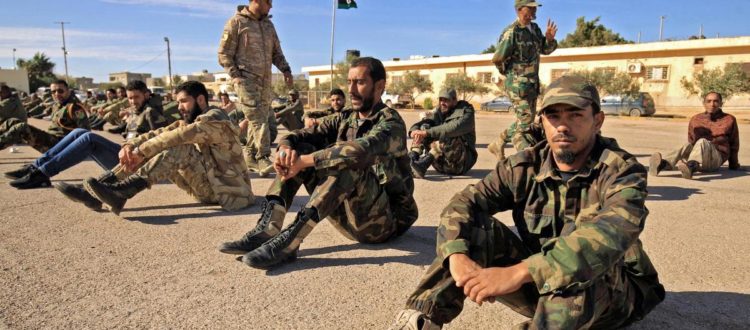Ceasefire in Libya: a gift for UN Day?
Taken Al-Sonni, Libya’s permanent representative to the UN commenting on the signing of the ceasefire agreement said that the success of any political solution to the Libyan crisis must include confidence-building measures and comprehensive national reconciliation.
| Suggested Reading | Conflict Background | GCCT |
By Rene Wadlow
On Friday 23 October 2020, Stephanie Williams, the U.N. acting Special Envoy for Libya said that the representatives of the parties in Geneva had agreed to a ceasefire starting 24 October, U.N. Day. All military units and armed groups on the front lines are to return to their camps. All mercenaries and foreign fighters in Libya are to depart within a maximum period of three months from 24 October.
Both the Russians and the Turks have sent mercenaries to back their interests. The Russians have used the “private” security firm Wagner, first founded to back Russian interests in Ukraine. The Turks have sent Syrian militias friendly to Turkey with promises of money and Turkish citizenship.
Since the outbreak of armed conflict on the outskirts of Tripoli on 3 April 2019, many persons have been killed and wounded. Migrants and refugees being held in detention centers have suffered. The humanitarian situation has degraded dramatically. In the recent past, all the armed factions have violated the laws of war and have a sad record of abuses against civilians.
General Khalifa Hifter hoped his attack would be a blitzkrieg ( a lightning war). He badly underestimated the degree of military response that he would meet from the militias loyal to the Government of National Accord led by Prime Minister Fayez al-Sariaj.
Libyan society faces large and complex issues in order to create a stable administrative structure of government that takes into consideration the geographic and ethnic diversity of the country. There are three distinct regions which must have some degree of autonomy: Tripolitania and Cyrenaica both bordering the Mediterranean and Fezzan in the southern Sahara. Within each of the three regions, there are differing and often rival tribal societies which are, in practice, more kinship lines than organized tribes. [1]
There are differing economic interests and different ideologies ranging from “Arab Socialism” to the Islamist ideology of the Islamic State (ISIS) which has spread from its Syrian-Iraqi base. The Association of World Citizens has proposed the possibility of con-federal constitutional structures. However, the first priority in the U.N.-led negotiations was to reach a ceasefire.
Taken Al-Sonni, Libya’s permanent representative to the UN commenting on the signing of the ceasefire agreement said that the success of any political solution to the Libyan crisis must include confidence-building measures and comprehensive national reconciliation.
A “Libyan Dialogue Forum” under the auspicies of the U.N. is to start in Tunis on 9 November with persons not holding government or administrative positions. Meanwhile, talks among the official representatives of the factions which led to the ceasefire who had been meeting in Geneva have moved to Montreux , a city also on Lake Geneva. We must hope that the ceasefire will hold and that discussions on constitutional structures will follow.
Rene Wadlow is President of the Association of World Citizens
Note:
- See J. Davis Libyan Politics Tribes and Revolution (London: L.R. Turis, 1987)
The views expressed in this article do not necessarily reflect the views of TransConflict.
Interested in writing for TransConflict? Contact us now by clicking here!



















